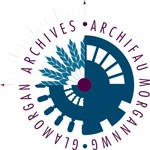If you have ever wondered about the origins of the building on the main street of Cowbridge with an ornate dome and theatre style canopy, then this article may be of interest. Taken almost a hundred years ago, the photograph below features the Pavilion Cinema in Cowbridge. It shows the building in its prime, and it’s remarkable just how far the façade of the building has survived intact; it is still easily identifiable today – although its days as a cinema are long gone.

The picture was taken by local photographer Edwin Miles of Bridgend between 1925 and 1929. Built and managed by local garage owner, Arthur Mills, the Pavilion had a cinema on the ground floor and a ballroom on the first floor. The first event in the new building was almost certainly a church bazaar held in the ballroom on the 6 May 1925. It was not long, however, before the newly-laid maple floor was put to good use with a dance on the evening of Thursday 21 May 1925, attended by over 250 people, to raise funds for the restoration of the Cowbridge Parish Church. The “magnificent ballroom” was described as one of the finest in South Wales. With dancing to “the strains of Rumson’s orchestra” until two in the morning, the event was described as an “unqualified success”.
It was some months later, however, before the cinema on the ground floor, with its newly installed Kalee No 7 projector, was ready to receive customers. Timed to coincide with the hustle and bustle of the Cowbridge Show, the Pavilion Cinema opened on Wednesday 16 September with a showing of a silent film “The Folly of Vanity”. Starring Betty Blythe, the film had “a dazzling dramatic fantasy” sequence with the heroine plunging into the sea to visit the underwater court of Neptune.
In the following years the ballroom at the Pavilion was a popular venue, often hosting the annual Glamorgan Hunt Ball. It was also used for a wide range of events, including a reception for Lloyd George in October 1930, when the former Prime Minister was made a Freeman of the Borough of Cowbridge. For its part, the cinema staged the very first productions of the Cowbridge Amateur Dramatic Society and thrilled audiences with popular films, including Ben Hur starring Ramon Novarro, Douglas Fairbanks as the swashbuckling lead in “The Thief of Baghdad”, and comedian Harold Lloyd in “For Heaven’s Sake”. A number of public information films were also shown at The Pavilion, including “The Path to Poultry Prosperity”. Attendance figures for the latter were not recorded.
Damaged by fire in April 1942, the Pavilion was restored in 1948 and continued to operate as a cinema until the mid-1950s. Although now used for offices, the Pavilion’s dome and facade have been retained and remain a familiar sight on Eastgate in Cowbridge.
Edwin Miles took photographs, primarily used as postcards, of many towns and villages across the Vale of Glamorgan between 1905 and 1929. We plan to feature more photographs from the collection over the coming months. The main collection can be seen at Glamorgan Archives or online on the catalogue http://calmview.cardiff.gov.uk/ under reference D261. The photograph of the Pavilion in this article can be found under reference D261/M525.
Tony Peters, Glamorgan Archives Volunteer

